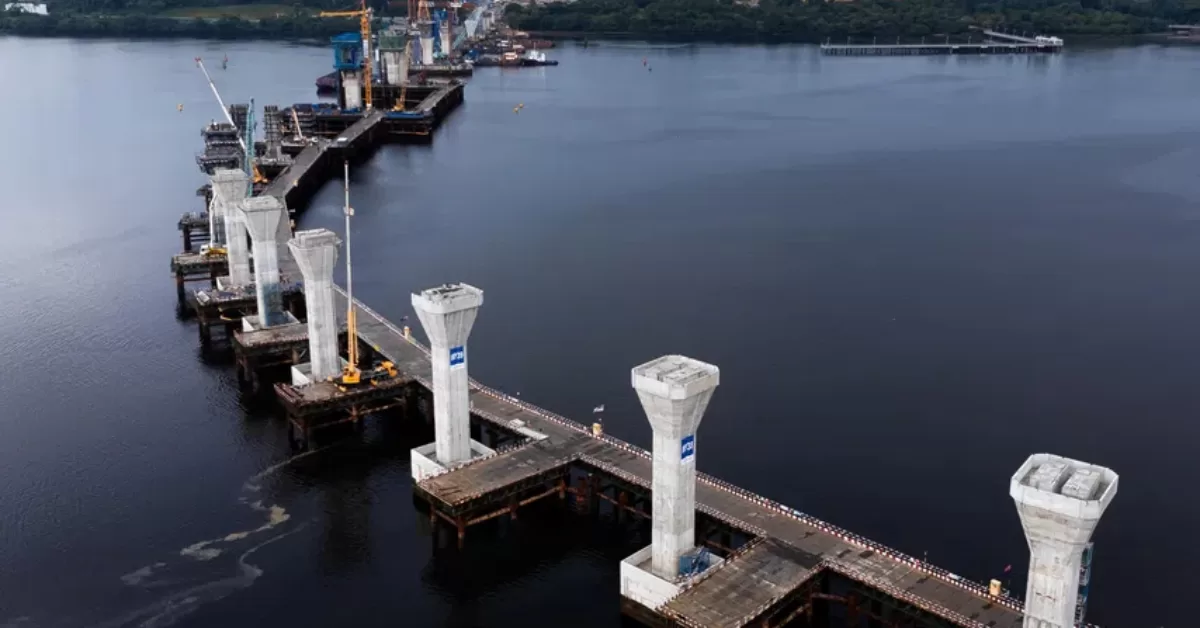Singapore-Malaysia RTS link is on the way to connecting both countries.
The RTS link project, which experienced several delays, is now 65% complete and will be operational as early as Q4 2026.
Details and overview of Singapore-Malaysia RTS Link
The Johor Bahru-Singapore Rapid Transit System (RTS) is a proposed cross-border railway system that will connect Malaysia and Singapore. The RTS link is under construction and will be operational by Q4 2026 or early 2027. The Bahru-Singapore RTS link is estimated at $3.24 billion.
The shuttle transit system will connect Johor Bahru in Malaysia and Woodlands in Singapore. The RTS link will have stations at Bukit Chagar and Woodlands North station. The shuttle railway will only have 2 terminus and will not have any other stops.
To ride the RTS link, passengers must first clear customs from their departure country.
This transit project will be the second link between the two countries. The first link of Malaysia and Singapore is the KTM Intercity’s Shuttle Tebrau which connects Johor Bahru Sentral and Woodlands Train Checkpoint. Once operational, the RTS link will replace the previous shuttle Tebrau service.
The Bahru-Singapore RTS will be Malaysia’s first LRT system outside of Klang Valley.
The operator for the Singapore-Malaysia RTS link is a joint partnership between Singapore SMRT Corporation and Malaysia Prasarana.
Also read:

Experienced delays, but is now at 65% complete
A transit system that connects the two countries has long been in the works. Since 1991, when the project to link Johor Bahru, Malaysia, and Northern Singapore was first suggested.
The RTS link was finally proposed again in 2010, to connect the two countries and ease traffic congestion along the Johor-Singapore Causeway. While the RTS link experienced construction delays, the project finally began construction in 2020.
The RTS Link Malaysia section started construction in November 2020, while the Singapore section started construction in January 2021. Malaysia Prime Minister Anwar Ibrahim and Singapore Prime Minister Lee Hsien Loong, both stated that the project is on track and will be operational by late 2026.
As of early 2024, the Johor Bahru-Singapore RTS is at a 65% completion rate. The project has reached a significant milestone with the completion of the 17.1-meter-long concrete span that connects the end rail viaduct of Malaysia and Singapore. This RTS link will run across the Strait of Johor, “the Causeway”.
The Singapore-Malaysia RTS link will carry 10,000 people per hour in both directions. This is a significant 35% of the human traffic usually ongoing in the Causeway, causing traffic and congestion.
According to the Malaysia Mass Rapid Transit Corporation (MRT Corp), the shuttle service will be operational from 6 am to 12 trains will run at 4-minute intervals during peak hours.
The RTS project will be 4 kilometers long, of which 2.7 kilometers will be in Malaysia and 1.3 kilometers will be in Singapore.

A stronger link between Malaysia and Singapore
The JB-Singapore RTS link stretches kilometers and will significantly boost both the Malaysian and Singaporean governments. This RTS link will bridge the countries Malaysia and Singapore even closer. Since 350,000 residents travel across the Causeway daily, the JB-Singapore RTS will significantly ease travel time for these residents.
The RTS project will significantly cut down travel time from almost 4 hours to a span of 20 minutes. This project will be beneficial for both countries and their commuters.
Come 2027 the Johor Bahru-Singapore RTS link will provide an era of convenience and connectivity for both countries.
Also read:
Vietnam-Singapore Submarine Cable to Support Vietnam’s Growing Digital Sector, Operational by 2027
